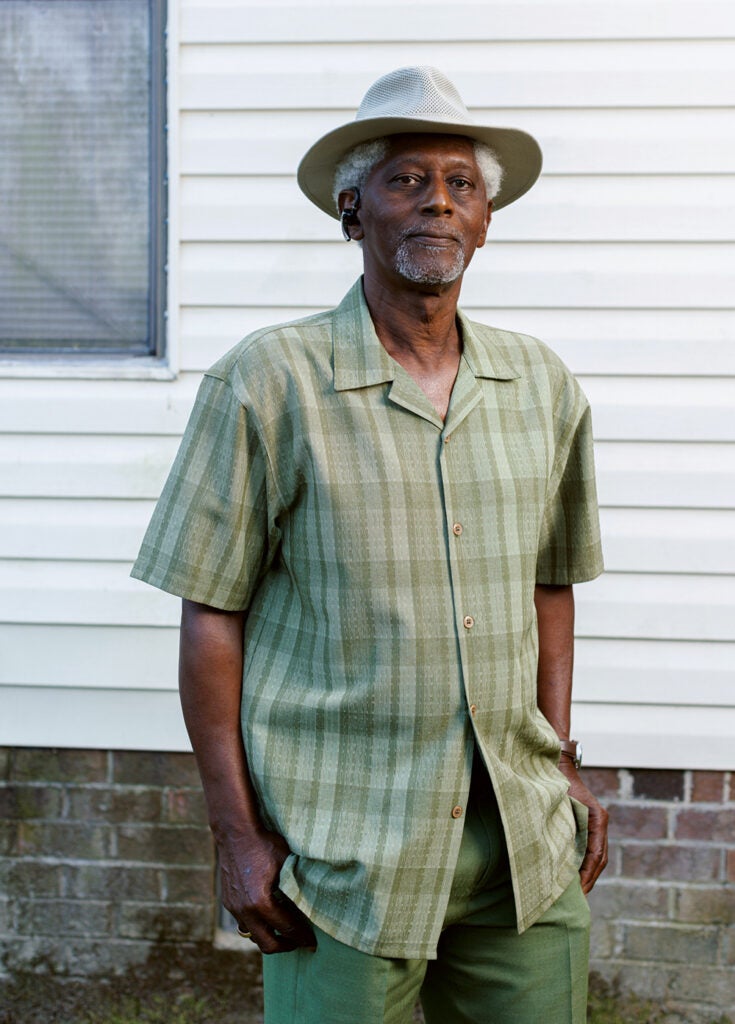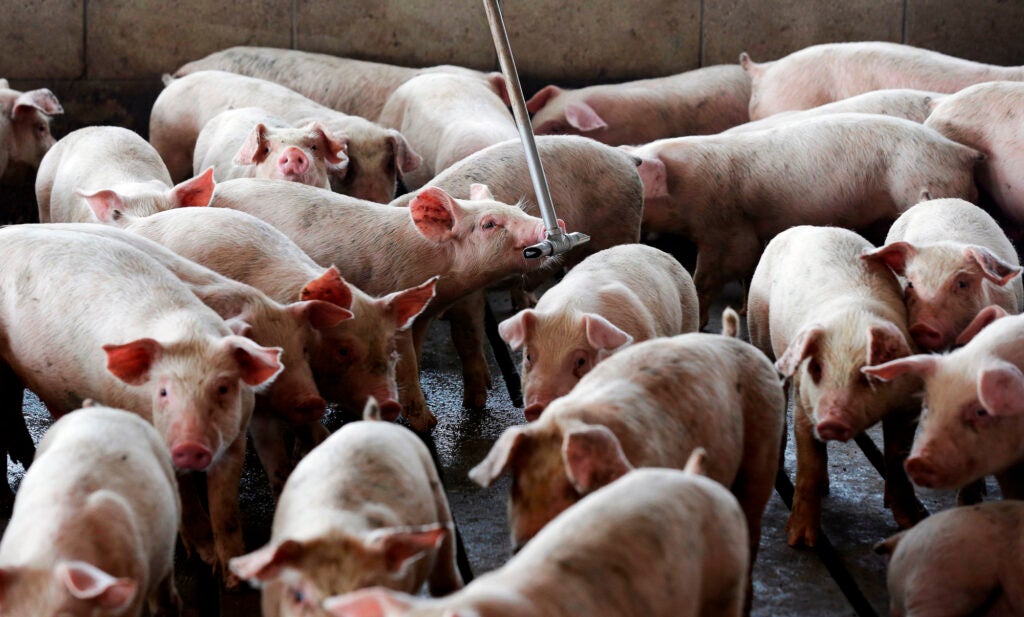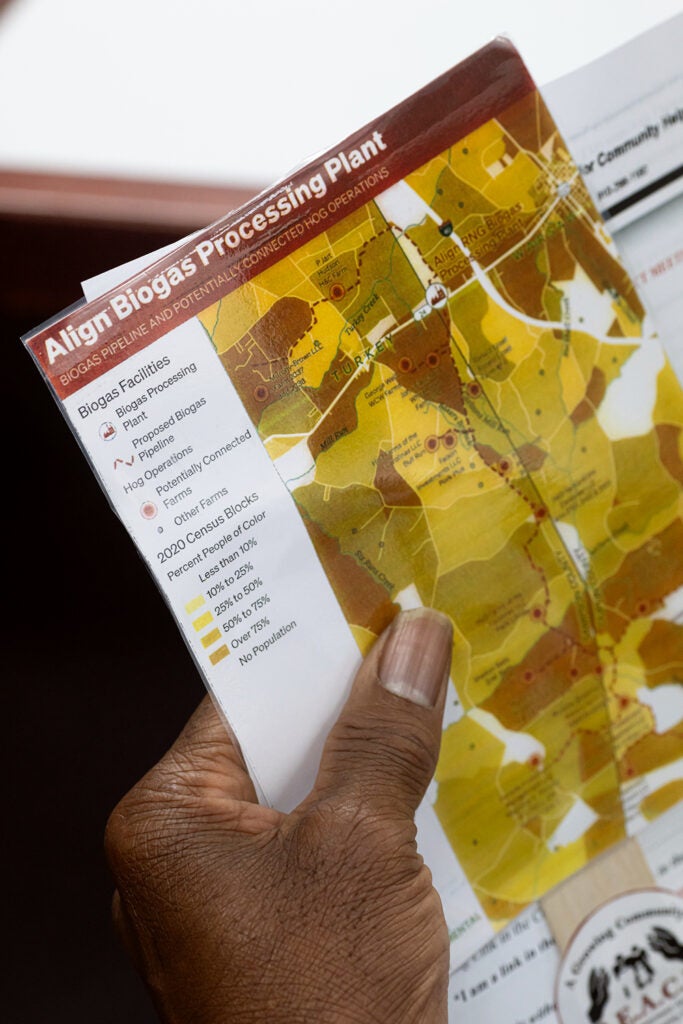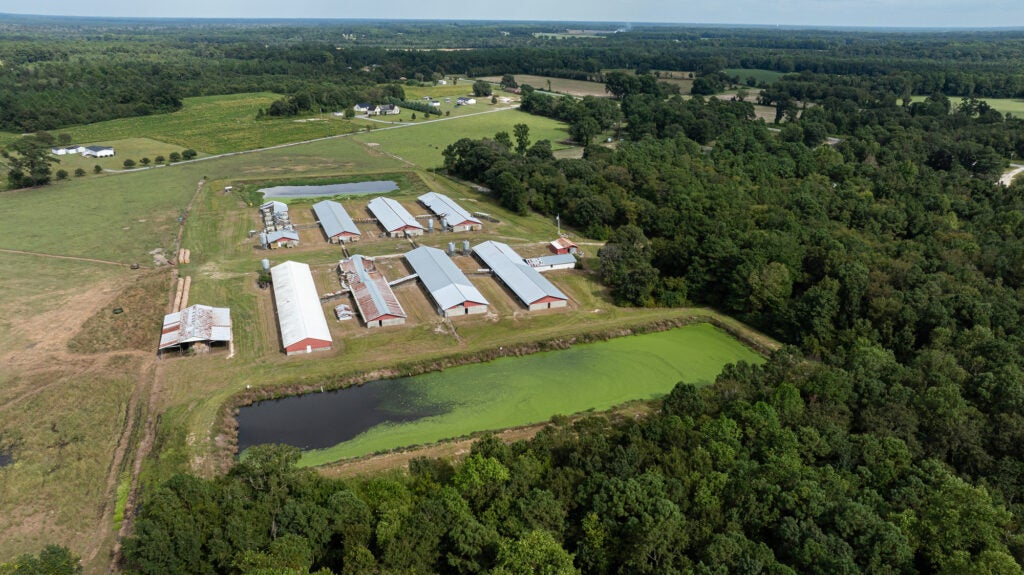North Carolina Communities’ Battle Against Animal Factory Pollution
Overburdened communities in North Carolina face the harshest impacts of industrial animal production. Now, they're taking a stand.

This page was published a year ago. Find the latest on Earthjustice’s work.
The stench of hog waste hangs heavy in the air, day and night. The odor is so bad that having friends and relatives over for outdoor gatherings and picnics has become a thing of the past, according to Devon Hall of Duplin County, North Carolina.
“I still have some remnants of a picnic table where we would have large family gatherings,” he says. But people want to avoid the smell. “We had to take events inside.”
Hall, co-founder and executive director of the Rural Empowerment Association for Community Help (REACH), has been working for years to protect residents of Duplin and neighboring counties from the cause of the stench — massive industrial animal facilities known as concentrated animal feeding operations, or CAFOs.
According to the U.S. Environmental Protection Agency (EPA), there are more than 21,000 Large CAFOs across the nation. Each one can confine hundreds or thousands of animals — at least 700 dairy cows, for example, or 2,500 pigs weighing 55 pounds or more. And they all generate a staggering amount of waste. One CAFO can produce more feces and urine than an entire city. But unlike cities, many CAFOs store animal feces and urine in large open pits where the waste releases hazardous, sometimes lethal, gases into the air.
The EPA exempts industrial animal facilities from monitoring and reporting their toxic air emissions, meaning that communities like Hall’s are exposed to deadly pollutants in the air they breathe often without knowing. But REACH, Earthjustice, and other advocacy groups are fighting to eliminate this exemption.

Devon Hall is the co-founder and executive director of REACH (Rural Empowerment Association for Community Help) in Warsaw, North Carolina. (Justin Cook for Earthjustice)
CAFO Country
Hall never imagined the rural community where he grew up — once dotted with family farms that grew vegetables and raised chickens to sustain farmers and their families — would become one of the primary centers for damaging industrial activity.
“Duplin County is an agricultural county. Gardening, farming, that’s part of what most everybody did,” says Hall. “From the time I was big enough to remember, we had chickens in the yard, and we had hogs in the pen. That life was the norm.”
But over the past 40 years, pork production has undergone a major transformation in North Carolina. According to the U.S. Department of Agriculture, there now are nearly 8 million hogs in the state, up from about 2 million in the early 1980s. North Carolina ranks second among all U.S. states in terms of pork production, and a quarter of North Carolina’s pork is sold overseas.
The booming industry is powered by the proliferation of CAFOs in eastern North Carolina, mostly concentrated in Duplin and neighboring Samson counties, where hogs outnumber people by as much as 35 to 1. It’s come at the cost of residents’ health: A Duke University study found that North Carolina communities with hog facilities have a 30% higher mortality rate than the rest of the state. In Duplin County, 89 people die prematurely each year as a result of emissions from hog production, according to a 2021 article in the Washington Post.

Young hogs at a CAFO operation in Eastern North Carolina. (Gerry Broome / AP)
CAFOs release high quantities of ammonia and hydrogen sulfide, which cause health problems including nausea, eye and skin irritation, and respiratory damage. Extreme exposure can lead to death. CAFOs also emit particulate matter (or PM2.5) — a lung-harming pollutant, long-term exposure to which is linked to increased risk of deadly heart disease, cancer, and stroke.
To Hall, the concentration of CAFOs in his community is a manifestation of environmental racism. Low-income communities of color in North Carolina reportedly have 10 times the number of CAFOs as wealthier white regions of the state — their quality of life, health, and home values sacrificed so the world can have slightly cheaper meat.
Earthjustice attorney Alexis Andiman says the racial disparities in the location of CAFOs are stark.
“Industrial animal facilities tend to be clustered near communities of color and low-income communities, which too often suffer disproportionately as a result of underregulated pollution,” Andiman says. “This is especially true in North Carolina, where people of color are about 1.5 times more likely to live within three miles of a large swine facility than non-Hispanic Whites.”
If people of all races and ethnicities in North Carolina were exposed to swine facility pollution at the same rate, adds Andiman, approximately 53,000 fewer Black people, 29,400 fewer Hispanic people, and 16,000 fewer Native American people would be at risk.

A biogas processing plant and pipeline plan held by an attendee of the REACH meeting in Warsaw, North Carolina. (Justin Cook for Earthjustice)
Taking the Fight to Court
Despite the health and environmental harms CAFOs bring to communities, the EPA has repeatedly exempted these industrial operations from reporting their toxic emissions under the Emergency Planning and Community Right to Know Act (EPCRA). This statute was intended to ensure that the public, along with state and local emergency responders, can access vital information about releases of extremely hazardous substances, including ammonia and hydrogen sulfide.
In 2008, Earthjustice argued that a prior rule exempting CAFOs from EPCRA reporting was unlawful. The U.S. Court of Appeals for the District of Columbia Circuit agreed in 2017, striking down the exemption. But shortly after the D.C. Circuit’s ruling, the EPA issued a new, broader exemption, relying on different legal arguments.
In 2018, on behalf of REACH and other partners, Earthjustice challenged the new exemption in U.S. District Court for the District of Columbia, arguing that the exemption violates EPCRA and that the EPA failed to consider the exemption’s consequences on human health and environmental injustice as required under the Administrative Procedure Act and the National Environmental Policy Act.
EPCRA’s language is plain: all industrial facilities must report toxic air emissions. There is no exemption for CAFOs, and the EPA lacks authority to create an exemption where Congress did not.

A CAFO and waste retention pond overgrown with algae in Warsaw, North Carolina. (Justin Cook for Earthjustice)
Living with CAFOs
While waiting for the D.C. District Court to rule on the new lawsuit, Hall and his neighbors in Duplin and Sampson County will continue to suffer the harmful effects of CAFO pollution.
Not only do residents breathe in toxic emissions from CAFOs, but they also can be exposed directly to animal feces and urine, as many CAFOs spray waste on fields. “In some communities where people are living close to spray fields, hog waste is being sprayed on their mailboxes and homes,” Hall says.
Water pollution from CAFOs is another major issue that has harmed communities and the environment. The open pits where CAFOs store feces and urine can overflow during storms, and waste sprayed on fields can wash into rivers and streams or seep into groundwater. That waste carries a range of pollutants, including nitrogen, phosphorus, disease-causing pathogens, heavy metals, pharmaceuticals, pesticides, and hormones. Once it reaches waterways, it drives algae blooms and can harm fish and other aquatic life.
“I’ve seen the contaminated water from spray fields flowing down into creeks and streams,” says Hall, who used to enjoy fishing in streams plentiful with brim, rainbow perch, and catfish. “I’ll never forget the first time I caught fish with sores and boils on it. There was a CAFO about 500 yards upstream.”

Members of REACH gather at their Warsaw, North Carolina headquarters to meet about CAFO issues in their community. (Justin Cook for Earthjustice)
Hall says his fight with the CAFO industry is not anti-business. He just wants to make sure that residents are protected and that CAFO owners do their best to limit the air and water pollution.
“I would hope they would take ownership and clean up this industry. With the spray fields, there’s got to be changes in how they dispose of their waste.” He notes the strong influence CAFO owners have had on the North Carolina state government, emphasizing the need for the EPA to step in.
Andiman says the EPA knows that CAFO pollution exacerbates environmental injustice.
“The EPA must require industrial animal facilities to comply with the laws that govern every other industry,” she says. “Any real solution will involve coordination and consultation with people living near animal facilities, who bear the brunt of the harm.”
Meanwhile, REACH and allies are taking the matters they can into their own hands through citizen science.
“We’re monitoring pollution levels and informing the public,” says Hall. “People need to know. If you don’t know what’s going on, then you can’t protect yourself.”
Earthjustice’s Sustainable Food and Farming program aims to make our nation’s food system safer and more climate friendly.